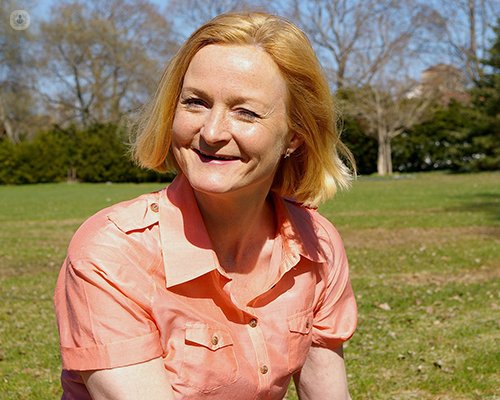Problems with the parotid gland, and how they are treated
Escrito por:The parotid gland is a major salivary gland, positioned in front of the ears and wedged between the jaw and the skull base on either side of the head. The name parotid means 'close to the ear'.
Here, Professor Neil Tolley, leading consultant ENT (head and neck) surgeon, provides an expert insight into the parotid gland, including the problems that can occur in the parotid gland, and how these are treated.

What is the parotid gland for?
We produce 1.5 litres of saliva per day and the parotid glands are responsible for around 25 per cent of the daily salivary secretion.
Saliva contains an enzyme that begins to break down complex carbohydrates such as starch. It is also rich in immunoglobulin A which helps fight infection. The saliva is important in keeping the mouth moist, facilitating the chewing of food, and making it easier to swallow and digest food.
What problems can occur in the parotid gland?
The parotid gland is the gland that becomes painful and swollen during an attack of mumps (paramyxoviridae viruses).
Tumours can also occur, where 80 per cent are benign - with pleomorphic adenoma being the most common form. This is known as an intermediate tumour with a 1 per cent rate of transformation into cancer each year. Leaving this tumour for 20 years therefore would result in a 20 per cent chance of it becoming cancerous. Up to 20 per cent of parotid lumps are cancerous.
How do I know I have a parotid gland tumour?
Most present as a painless lump which should be investigated by an ultrasound scan (USS) and fine needle aspiration biopsy (FNA). Occasionally an MRI scan may be additionally requested.
Most lumps within the parotid gland require surgery as the accuracy of FNA is only 90 per cent. An exception is an adenolymphoma or Warthin’s tumour seen most commonly in male smokers over 50 years of age.
The parotid gland's main duct (Stensen’s duct) may develop a stone (calculus) which can cause pain and swelling of the gland. An autoimmune disease such as Sjögren’s syndrome, of which 50 per cent of cases are associated with rheumatoid arthritism is another condition that can affect the parotid gland.
How is parotid gland surgery performed?
The most common procedure performed on the parotid gland is a superficial parotidectomy. This is an operation that can be performed with minimal scarring and low permanent risk to the facial nerve. Patients suffering from stones can have these removed using endoscopic basket retrieval techniques performed as a day-case.
If you are concerned about lumps in your glands, don't hesitate to make an appointment with Professor Neil Tolley via his Top Doctors profile today.


